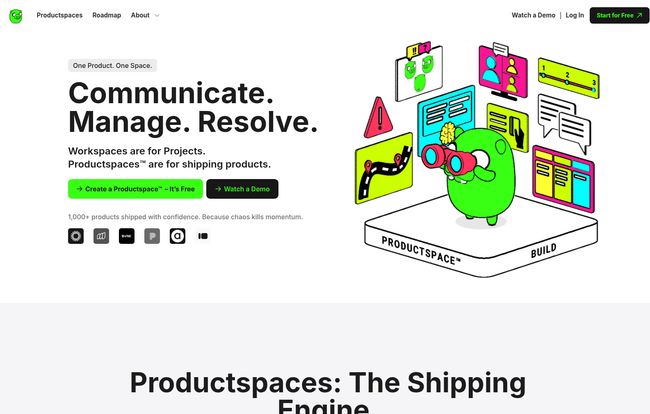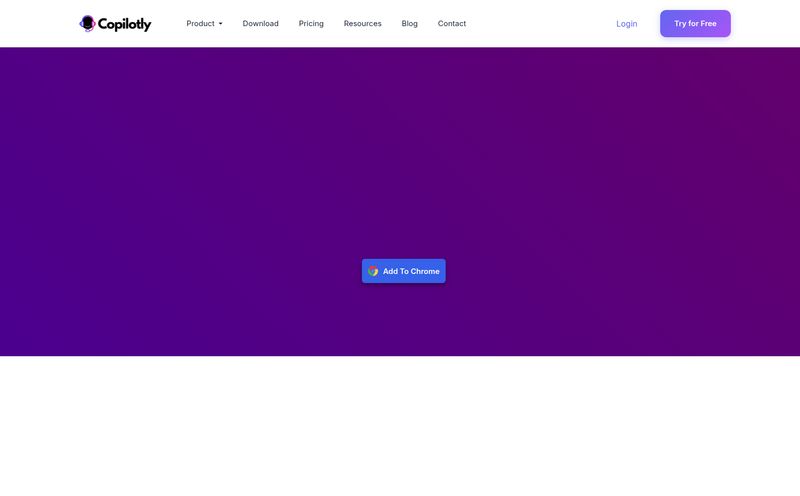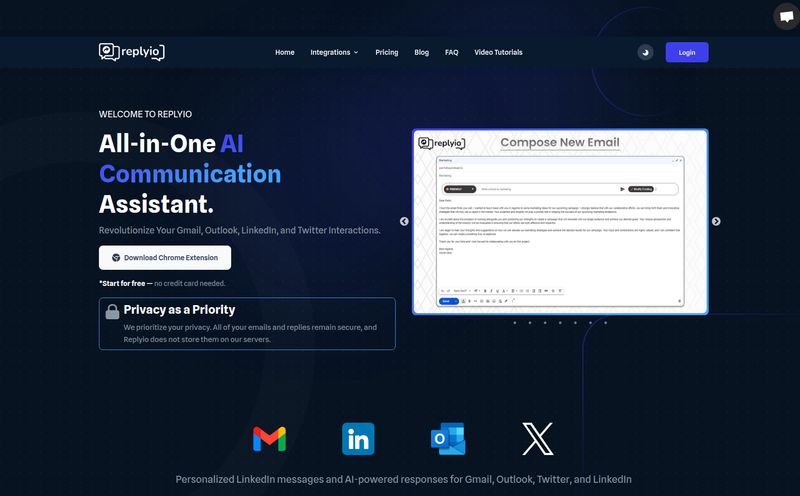If I have to open one more browser tab to manage a project, I might just throw my laptop out the window. You know the drill. The roadmap is in one tool, the backlog's in another, the designers are leaving feedback in Figma, the developers live in Jira or something similar, and all the actual, frantic communication is happening in a dozen different Slack channels. It’s a mess. We call it “collaboration,” but most days it feels more like organized chaos.
I’ve been in the SEO and digital marketing game for years, and I’ve seen this pattern on every product team I've worked with. We spend more time managing the tools that are supposed to help us work than we do actually, you know, working. It’s exhausting. And it’s expensive. Every new subscription is another line item on the company card.
So when I stumble across a platform that claims it can fix this, my ears perk up. But I'm also deeply skeptical. I've been burned by 'all-in-one' solutions before. But Wallow... Wallow feels a bit different. Their tagline is basically “Stop drowning in tools,” and frankly, that’s a message that resonates.
So What Exactly is Wallow, Anyway?
Wallow isn't just another task manager or chat app. It's pitching itself as a unified Productspace™. Think of it less like a single tool and more like a dedicated command center for your entire product team. The whole idea is to bring everything—and everyone—into one place to communicate, manage work, and resolve issues without constantly switching contexts.

Visit Wallow
They’re aiming to be the place where your team's vision, tech, and engine all meet. It's a bold claim, but one that’s desperately needed. The goal isn't just to tidy up your workflow, but to help you actually build and ship products faster by cutting out all the noise and distraction.
The Magic of a Single ‘Productspace™’
This "Productspace" concept is the core of Wallow. Instead of having information scattered across the digital wind, everything related to a product lives in one cohesive environment. What does that actually mean in practice?
- Centralized Communication: No more digging through Slack threads to find that one crucial decision. Chat, calls, and feedback are all integrated right where the work is happening.
- Real-Time Issue Tracking: The whole cycle of "See it. Report it. Fix it." happens in one flow. A bug is spotted, a ticket is created, it's assigned, and progress is tracked transparently. No more ideas lost in translation between different platforms.
- A Clear View of Everything: From high-level roadmaps to the nitty-gritty of individual tasks and backlogs, you get a single source of truth. This is huge for team alignment. When everyone is looking at the same board, it's a lot easier to pull in the same direction.
I remember a project a couple of years back that nearly went off the rails because the marketing team’s launch plan was completely disconnected from the dev team’s feature release schedule. It was a classic case of the left hand not knowing what the right was doing. A centralized space like this could have prevented weeks of panic and rework. It’s not just a convenience; it’s a fundamental improvement to how teams operate.
AI That Actually Helps, Not Just Hypes
Okay, let's talk about the buzzword: AI. Every tool has "AI" now, but often it feels like a gimmick. Wallow seems to be taking a more practical approach. Their AI isn't there to write your marketing copy for you; it's there to act as a project detective.
It’s designed to identify roadblocks before they become full-blown crises. By analyzing progress and communication patterns, it can flag potential issues, like a task that’s been stalled for too long or a developer who seems overloaded. It even includes team sentiment monitoring, which is a fascinating, if slightly Black Mirror, concept. The idea is to get a pulse on your team's morale and address burnout before it kills productivity. It’s a proactive, rather than reactive, use of technology, and I'm here for it.
More Than Just Tasks: Communication and Payments
Two features really stood out to me as showing a deeper understanding of modern team dynamics. First, the integrated communication. This is critical. When the conversation is tied directly to the task, you lose so much of the friction and confusion.
Second, and this is a big one for teams working with freelancers, is the seamless payments. When a task is marked as done, you can pay your contractors instantly. No more chasing invoices, no more 'did you get my payment?' emails. This simple feature can do wonders for morale and for your relationship with your freelance talent. Happy freelancers do better work, it's that simple.
So, What's the Catch? The Potential Downsides
No tool is perfect, of course. While I'm optimistic about Wallow, I can see a few potential hurdles. For one, getting a whole team to adopt a new, all-encompassing platform can be a challenge. There’s always a learning curve, and some team members might be resistant to leaving their comfortable, familiar tools, even if they're inefficient.
There's also the reliance on the platform itself. By putting all your eggs in the Wallow basket, you're betting big on them. And while the AI insights are powerful, you still need smart humans to interpret them. You can't just put the system on autopilot and expect magic to happen.
Wallow Pricing: How Much Does This Calm Cost?
Alright, the all-important question: what’s the damage? Wallow’s pricing structure is actually pretty refreshing and seems designed to grow with you. They have three main tiers.
| Plan | Price | Best For |
|---|---|---|
| Launch | $0 / month (Unlimited users) | Teams moving fast from concept to MVP. You only pay when work is done. |
| Scale | $9 / user / month | Teams that need more structure, deeper insights, and analytics. |
| Enterprise | $19 / user / month | Large teams needing advanced security, compliance, and priority support. |
The Launch plan being free is a massive plus. It lets you get your whole team on board and kick the tires without any financial commitment. The idea of "Only pay when the work is done" seems to refer to transaction fees for things like freelancer payments (the site mentions a 9.7% fee for freelancers on the Scale plan), which is a fair model. The paid tiers, Scale and Enterprise, add more advanced features like deeper analytics, sentiment tracking, and compliance tools for larger organizations. The pricing feels very reasonable compared to the cost of subscribing to 3-4 separate tools.
My Final Take: Is Wallow Worth It for Your Team?
After digging through what Wallow offers, I have to say, my initial skepticism has turned into genuine curiosity and a bit of excitement. It’s not just another entry in the crowded project management space. It’s a thoughtful attempt to solve a real, pervasive problem: tool bloat and the resulting communication breakdown.
Will it be the silver bullet for every team? Probably not. If you have a highly specialized workflow with niche tools you simply can't replace, it might be a tough switch. But for the vast majority of product teams—startups, scale-ups, even smaller corporate teams—who are feeling the pain of fractured workflows, Wallow looks incredibly promising.
It’s designed for builders by people who seem to understand what it takes to build. By focusing on speed, clarity, and alignment in a single Productspace, Wallow might just be the life raft that so many of us drowning in SaaS tabs have been looking for. With a free plan to get started, there's really no reason not to give it a shot.
Frequently Asked Questions about Wallow
What is a Productspace™?
A Productspace™ is Wallow's term for a centralized, all-in-one environment for a product team. It combines roadmap planning, task management, issue tracking, team communication (chat, calls), and even freelancer payments into a single, unified interface to reduce context switching.
How does Wallow's AI help with productivity?
Wallow's AI is used for practical insights rather than content generation. It analyzes project data to identify potential roadblocks, monitor team sentiment to prevent burnout, and see patterns to help optimize workflows, allowing teams to address problems proactively.
Can I use Wallow with freelancers?
Yes, absolutely. Wallow is designed with freelancers in mind. One of its key features is integrated, instant payments for completed tasks, which streamlines the entire process of working with and paying external contractors.
Is Wallow free to use?
Wallow has a robust free 'Launch' plan with unlimited users that includes all the essential features for a team to get started. Paid plans, 'Scale' and 'Enterprise', are available for teams that need more advanced analytics, support, and security features.
Will Wallow replace tools like Jira or Slack?
That's the goal. Wallow is designed to consolidate the functions of multiple tools like Jira (for issue tracking), Slack (for communication), and others into one platform to create a single source of truth and reduce the costs and complexity of using many different applications.



